Recent Articles
Popular Makes
Body Types
Ford Mustang Through the Years: Highlights and Lowlights
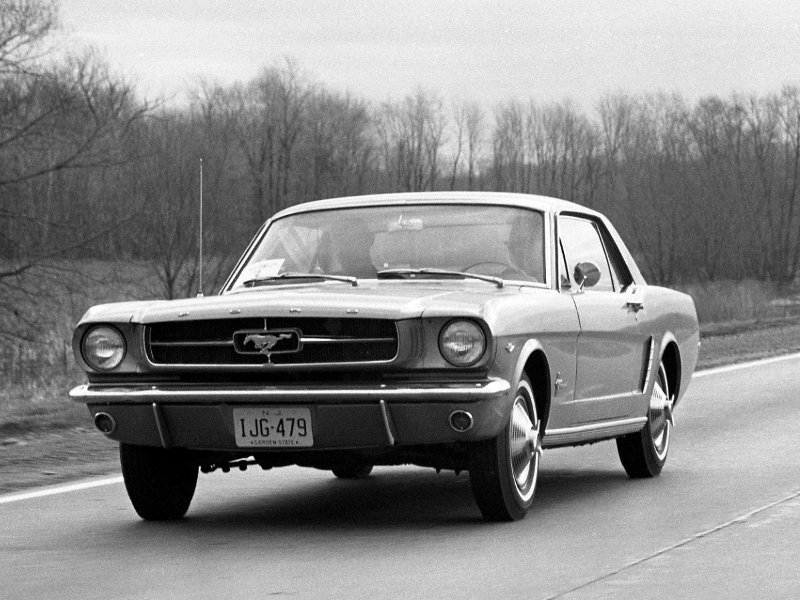
1965 Ford Mustang - Front Drivers Side Three Quarter View ・ Photo by Ford Media
The Ford Mustang is an iconic car. The first of the pony car breed, the Mustang was first introduced as a 1965 model (though early production cars are often called 1964 1/2 models), and has gone on to sell in amazing numbers, and inspired numerous competitors. Unlike these competitors, which have come and gone, the Mustang has been around every year since then, and with each new generation, and sometimes from year to year, changes were made that affected performance, looks, and price. Here is a look back at some of the Mustang’s highs and lows over the years.
Horsepower
When it comes to the early cars, the most powerful were the 1969 and 1970 Boss 429s, with 375 horsepower, while the 428 Cobra Jet (and Super Cobra Jet) equipped cars weren’t far behind at 335 horsepower. Both of these numbers are thought to be conservative, with people often citing 500+ horsepower for the 429s and 400+ for the 428s. Shelby also had a GT500 model that was powered by a 428 cubic inch V8 rated at 360 horsepower.
Those numbers wouldn’t be matched until the arrival of the 2000 Cobra R, a very rare car sporting a DOHC 5.4-liter V8 producing 385 horsepower. 2003 and 2004 brought the ‘Terminator’ Cobra, with a supercharged DOHC 4.6-liter pumping out 390 horsepower. By 2011, the new 412 horsepower 5.0-liter motor was powering V8 Mustangs, while Boss 302 models put out 444 horsepower. The most powerful Mustang ever was the 2014 GT500, with a tire shredding 662 horsepower from a supercharged 5.8-liter DOHC V8.
The 1970s weren’t kind to fans of horsepower. New emissions laws and the introduction of leaded fuels saw horsepower levels plummet, while the change from brake or gross horsepower ratings to net ratings made the situation appear even worse. In 1979, a 3.3-liter V6 was on offer, with a paltry 85 horsepower. There was always the V8 if you wanted more power (except in 1974 when no V8s were on offer), and from 1976 to 1978 the 302 made a depressing 134 horsepower. Even worse, a 4.2-liter V8 with 119 horsepower was available in 1980.

Photo by Ford Media
Fuel Economy
Why would you buy a Mustang if you wanted an economical car? Well, from the ‘70s all the way to the early ‘90s, Ford placed 4-cylinder engines in the Mustang, hoping that the small engines would help sell the car during the various fuel crises. In 1975, Ford even introduced the Ford Mustang II MPG, with a few modifications that improved fuel economy, with a trade-off in performance.
Did it work? In 1975, Mustangs with the 2.3-liter 4-cylinder were rated at 18 mpg in the city and 26 on the highway (using an old rating system), matching the Pinto’s numbers. In 1987, the 4-cylinder 5-speed Mustang was rated at 22 mpg in the city and 28 on the highway.
Those numbers are more than matched by the modern car. 2011 through 2014 V6 Mustangs with the automatic are rated at 19 mpg in the city, 31 on the highway, for a combined 23 mpg, and the 2015 Mustang with the EcoBoost 4-cylinder is rated even better, at 22 mpg city, 31 highway, and 26 mpg combined.
Fuel economy information for older cars is hard to find, so we have no real numbers on the engines from the ‘60s and early ‘70s. In 1975, the 302 V8 was rated at 10 mpg city and 18 highway. Modern cars aren’t necessarily more efficient though; the 2000 Mustang with the 32-valve 5.4-liter V8 is the worst rated modern Mustang, at 12 mpg city, 17 highway, and 14 mpg combined. The 2013 GT500, the most powerful production Mustang that Ford has ever produced, is however rated at a surprisingly decent 15 mpg city, 24 highway, for a combined 18 mpg.
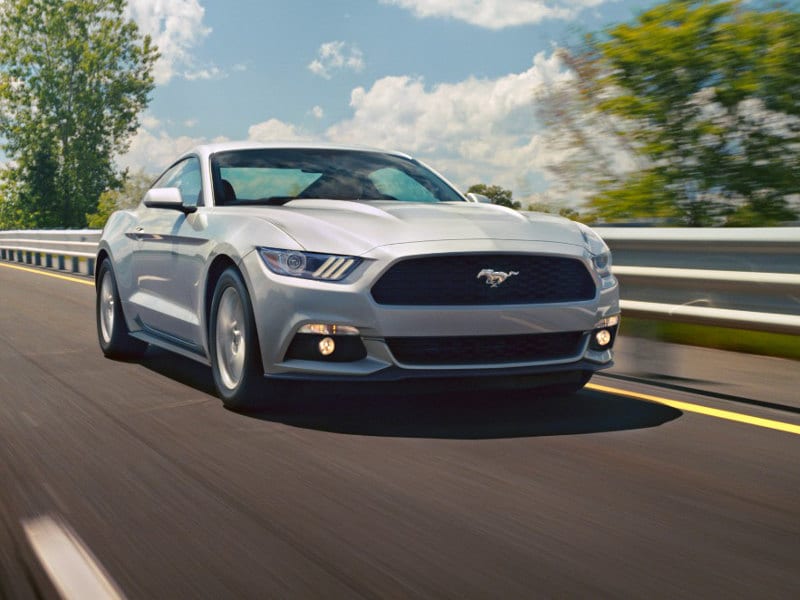
Photo by Ford Media
Weight
The Mustang started off as a light car, with the first models weighing at around 2,600 lbs in 1965. From there they picked up weight as the cars got bigger and more luxurious (and more powerful) through the ‘60s and early ‘70s. The Mustang II returned the car to approximately its original size, and when the Fox Mustang was introduced in 1979, it was even lighter than the original, coming in at around 2,550 lbs.
The current Mustang is the heaviest regular Mustang produced, weighing in at approximately 3,700 lbs for the V8 powered Coupe (the EcoBoost models are the lightest currently on offer at just over 3,500 lbs). The late-model GT500 models are the heaviest, coming in somewhere around 3,850 to 3,900 lbs for the Coupe, while Convertible models are even heavier, with a curb weight about the same as a Crown Victoria.
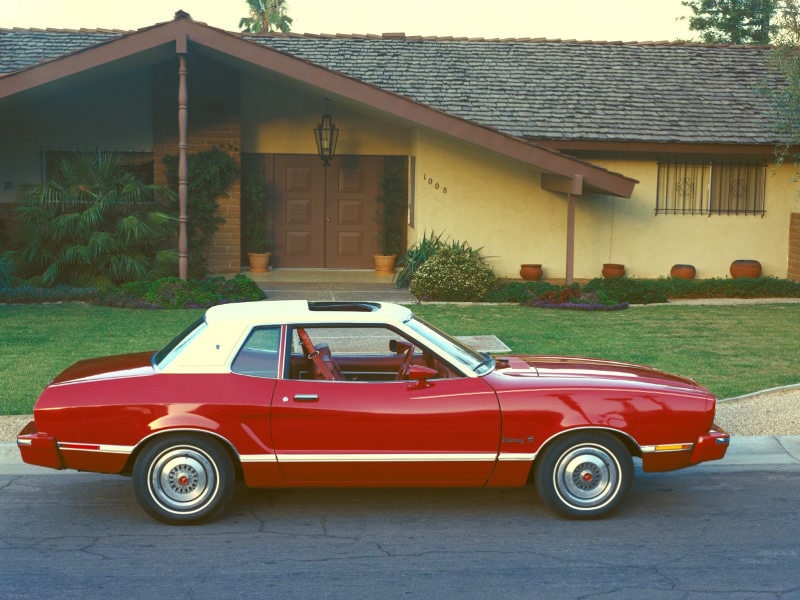
Photo by Ford Media
Handling
The first Mustang that was really designed for handling was 1965’s Shelby GT350, which included a special lowered suspension with Koni shocks, special 15” Goodyear tires, a relocated battery, and a rear seat delete. The Boss 302 Mustangs from ‘69 and ‘70 also feature some upgraded aerodynamic and suspension parts, but the road-going models weren’t as hardcore as the earlier GT350s.
The next experiment with handling came with the Mustang SVO in 1984. Powered by a turbocharged 2.3 liter 4-cylinder engine (for weight savings and better weight distribution compared to the 5.0 liter V8), the SVO was also equipped with four-wheel disc brakes, a Koni suspension, and different headlights.
The 2000 Mustang Cobra R (the third and most hardcore in the Cobra R line) featured an independent rear suspension (IRS is also found under the 2003-2004 Cobra Terminator models and in all 2014 and newer Mustangs) as well as numerous aerodynamic tweaks and suspension upgrades.
In 2012, the reincarnated Boss 302 (and the more extreme Laguna Seca version) was introduced, with more power, a stiffer and lower suspension with adjustable shocks, and a special aero package. The Laguna Seca version added Recaro front seats, different suspension tuning, and different front and rear aero treatments.
The latest Mustang designed for the track is the Shelby GT350 (and the even more track oriented GT350R). These cars are quite different from normal Mustangs, featuring the flat-plane 5.2-liter Voodoo V8, a special suspension (with available magnetorheological shocks), and Brembo brakes with 2-piece rotors, while the R version deletes the rear seat and includes carbon fiber wheels.
Generally, the cars with the heaviest powerplants are the ones that handle the worst. The Cobra Jet cars are probably the worst of the bunch, with the Boss 429 being slightly better (and reportedly some of the best handling of the ‘big block’ cars). Similarly, the modern GT500s are nose heavy because of the added weight associated with the supercharger and its ancillary needs, which means that on a road course, they can sometimes be beaten by the lower powered naturally aspirated V8s.

Photo by Ford Media
Looks
We all know that looks are subjective, but some people would agree that the best looking Mustang is the 1968 Ford Mustang GT Fastback, as seen in the movie Bullit with Steve McQueen. Others would point to Eleanor, either the 1971/1973 Mustang from the original "Gone in 60 Seconds," or the 1967 Mustang from the remake. Other famous models include KITT from the 2008 version of Knight Rider, Barricade from Transformers, and the Nissan RB26 ‘67 Mustang Fastback from the third Fast and Furious movie.
For regular production models, who would turn down a 1970 Mach 1, a 1969-70 Boss 302, or even an original 1965 model. Fans of the fox-body Mustang will probably mention the 1993 Cobra R or the 1986 SVO, while new edge fans will like the functional look of the 2000 Cobra R. With the Mustang, there is no shortage of good looking specimens.
When it comes to the low point of Mustang styling, most people would agree that the second generation Mustang (the Mustang II) starting in 1974 was the low point for the model. Somehow, despite this less than favorable legacy, the model was a great seller at the time, and even today still retains a few fans.
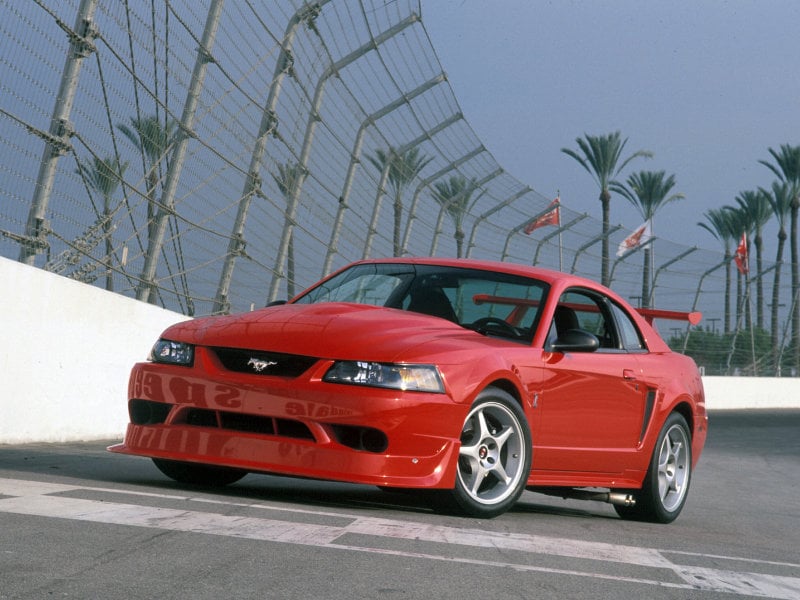
Photo by Ford Media
Price
In 1964, the original Mustang cost $2,368, which would be about $18,000 after inflation has taken its toll, which is also about what one in good shape would be worth today. At auction, a few Mustangs have gone for more than a million dollars, but those have mostly been factory prototypes or cars with a pedigree. Mustangs powered by 429s can reach the 6-figure mark, while 428 powered models are in the mid-to-upper 5-figure range.
In 2000, the Cobra R had a manufacturer’s suggested retail price of $54,995 ($78,500 after accounting for inflation), and then in 2013 the GT500 again had an MSRP of $54,995 (about $57,000 after inflation). Today, without going aftermarket the most expensive stock Mustang is the Shelby GT350R, with a starting MSRP of $61,295.
Today, the most affordable way to get into a Mustang is generally a Fox body (1979 to 1993, though they are starting to get rare) or an SN-95 model (1994 to 1998), with New Edge (1999 to 2004) models also coming down in price.
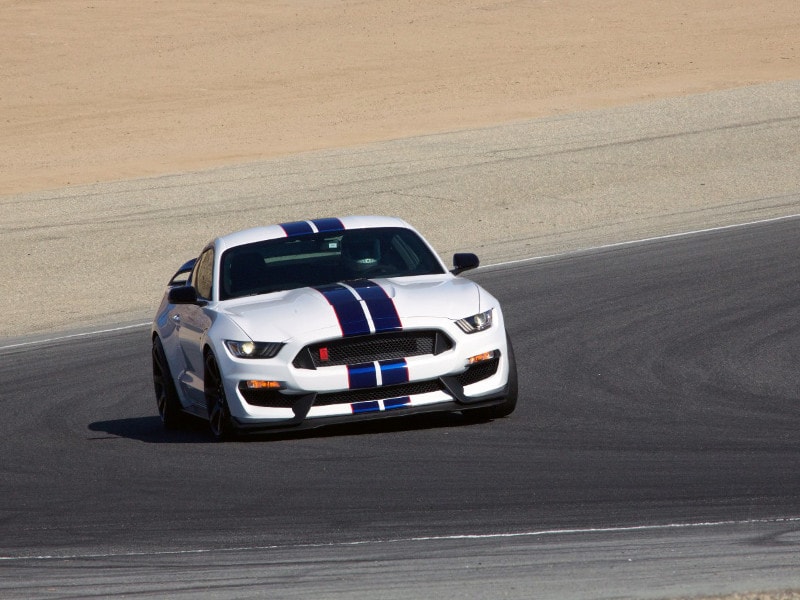
Photo by Ford